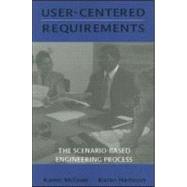- ISBN: 9780805820652 | 0805820655
- Cover: Nonspecific Binding
- Copyright: 2/1/1997
Developing today's complex systems requiresmorethan just good software engineering solutions. Many are faced with complex systems projects, incomplete or inaccurate requirements, canceled projects, or cost overruns, and have their systems' users in revolt and demanding more. Others want to build user-centric systems, but fear managing the process. This book describes an approach that brings the engineering process together with human performance engineering and business process reengineering. The result is a manageable user-centered process for gathering, analyzing, and evaluating requirements that can vastly improve the success rate in the development of medium-to-large size systems and applications. Unlike some texts that are primarily conceptual, this volume provides guidelines, "how-to" information, and examples, enabling the reader to quickly apply the process and techniques to accomplish the following goals: * define high quality requirements, * enhance productive clientinvolvement, * help clients maintain competitiveness, * ensure client buy-in and support throughout the process, * reduce missing functionality and corrections, and * improve user satisfaction with systems. This volume clearly details the role of user-centered requirements and knowledge acquisition within Scenario-Based Engineering Process (SEP) and identifies SEP products and artifacts. It assists project personnel in planning and managing effective requirements activities, including managing risks, avoiding common problems with requirements elicitation, organizing project participants and tools, and managing the logistics. Guidelines are provided for the following: selecting the right individual and group techniques to elicit scenarios and requirements from users; subject matter experts, or other shareholders; and ensuring engineers or analysts have the necessary skills.







